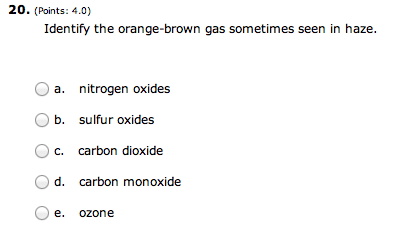PHARMACOLOGY Study Guide - Teratology, Bronchospasm, Allicin
Document Summary
Toxicology is the branch of pharmacology that encompasses number of chemicals in the environment (eg, atmosphere, the deleterious effects of chemicals on biologic systems. Nitrogen oxides (6%) (cid:151) co (cid:151) odorless and colorless gas (cid:151) competes with oxygen for hemoglobin (cid:151) affinity for hgb 200-fold greater than o2 (cid:151) threshold limit in an 8th workday: 25 ppm. Effects (cid:151) tissue hypoxia (cid:151) 40% of hgb become carboxyhemoglobin which leads to collapse & synapse (cid:151) prolonged hypoxia: irreversible damage to the brain and myocardium. Treatment (cid:151) removal of source of co (cid:151) 100% oxygen. A colorless, irritating gas that forms sulfurous acid. Nitrogen dioxide (no2): a brownish irritant gas; the principal member of this group. Formed in fires and silage on farms (cid:151) conjunctival and bronchial irritation (cid:151) 5-10 ppm: severe bronchospasm. Pulmonary edema (cid:151) acute (cid:151) pulmonary edema (cid:151) automobile and emissions truck traffic (cid:151) aggravate disease cardiopulmonary.


